
#microdot
Vadim Antonovich Shelkov
HISTORY OF «MICRODOTS» I would like to express my sincere gratitude to Keith Melton, the creator and curator of the “Museum of the History of Spy Equipment” (H. Keith Melton, Нistorical Espionage Equipment, Jupiter, Florida, USA) for kindly providing the reference materials used in this publication.
Last time, speaking about the important role of special equipment in providing communications in intelligence, we also mentioned photography.
And photography in intelligence is not only copying secret documents and photographing certain objects of interest to the “Center”.
When transporting the obtained materials, their dimensions play a significant role. This is where microfilming equipment comes to the rescue.
In this case, the volume of the transferred materials is reduced by tens or even hundreds of times, making it easier to place them in a hiding place or container.
You could have become acquainted with some examples of such equipment in the first article of this series (“Special Equipment”, 4-5, 1998, pp. 54 – 64).
But in important cases, when security issues were given exceptional attention, the intelligence services of developed countries used special technical means and methods for obtaining “microscopic photographic images that were so small that, even knowing about their presence in the mail, they were practically impossible to detect without the exact coordinates of their location.
Such microphotographs received the very expressive name of microdots.”
In general, a microdot means a greatly reduced photographic image of a document of normal size, for example A4 (210×297 mm).
Many experts consider 100-fold reduction to be the limit value used in practice, although it is not precisely defined.
Microdot is a simple translation of the German term Mikrat, introduced by its creator Emanuel Goldberg in 1925 to denote the microscopic image he created.
This was done by analogy and apparent similarity with the usual period at the end of a sentence, which usually has a diameter of about 0.8 mm when using a typewriter with a “pica” font.
Thus, in order to bring a standard-sized document to the size of a typewritten period, a reduction of 275 times is required.
We can also talk about ultra-micro-dots.
This term was introduced by English specialists engaged in the search for and detection of German communication channels before and during World War II.
According to them, in Bermuda they managed to intercept messages with a reduction of 400 to 750 times.
The reduction of the original can reach two thousand times, and the microimage itself does not exceed 0.2 mm in diameter!
I. Generally speaking, the passion for making micro images has a long history: these include inscriptions on amulets, the earliest of which is an amulet found during excavations of the southern wall of the Jerusalem Temple, dating back to the early 8th century BC, and micro texts inscribed or imprinted on the pages of various folios (without a doubt, the most typical example of micro inscriptions is the Psalter of St. Jerome, written by the monk Joachim the Great in 1481 in Rottenberg for the library of Pope Sixtus IV. At the bottom of the second page, the first 14 verses of the Gospel of John are inscribed in a circle 12 mm in diameter. This text contains 168 words of 744 letters. According to calculations, each letter occupies an area of no more than 0.15 sq. mm.) and, finally, special gift editions. As a rule, it is impossible to read, much less apply, such inscriptions without the use of magnifying devices. It cannot be ruled out that man began using optical devices much earlier than the famous invention of Leeuwenhoek. In any case, it follows from Greek sources that the ancients knew the method of using small glass vessels filled with water as magnifying devices.
But all this is from the category of ritual, cult or curious use of micro images, we are interested in the question of their use by special services in «operational practice. So, back in 1644, the famous English scientist Robert Hook wrote: «If the method of miniature writing became simpler and more accessible, it would find a successful application in sending intelligence messages (that's exactly how it is in the text!) without fear of being discovered or arousing any suspicion» (Hook, Robert, Micrographia, London, 1644, p.16).
As early as the 18th century, special mechanical devices for making micro-inscriptions were created in England and France. And even after the invention of photography, mechanical engineers continued to create precision pantographs for reducing images during engraving and writing (Fig. 1). One of the most advanced such devices, Peter’s Machine for Microscopic Writing, is kept in the Oxford University Museum. It made it possible to make inscriptions with a character height of only 2.5 microns! And in 1923, the American A. McEwen even patentedA device for writing intelligence messages, designed on the basis of the aforementioned Peter Machine. On the cover of Scientific American for June 1923, where a note about this device appeared, it was even written: “Inscriptions for the microscope eye — how to engrave a spy message on the head of a nail.”
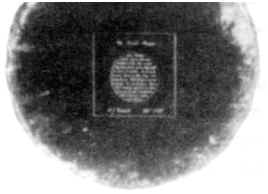
Fig. 1. An example of the use of diamond engraving for the production of micro-inscriptions, made by R.J.Farronts in September 1855.
II. But enough about mechanics. How did microphotography begin (for the sake of certainty, let us immediately stipulate that by microphotography we mean the production of photographic images of an exceptionally small size, with the object, as a rule, being an A4 text document, etc. At the same time, we will call “photomicrography” the photographing of microscopic objects using a microscope.) and how was it used for military and intelligence purposes?
A few weeks after Louis Arago's announcement in 1839 of Dagger's invention of the photographic process, there were many responses from both scientists and various public figures about the future of this outstanding invention. As early as July 30, 1839, the famous French scientist Gay-Lussac (1778-1850) predicted the widespread use of photography in military affairs. And there is every reason to believe that the Crimean War of 1853-56 was the first where photography was used quite actively in the field.
The recognized pioneer of microphotography is considered to be the English enthusiast photographer John B. Dancer (Fig. 2). It seems that it was he who made the first micro-photo reproduction. In 1839, having installed a microscope lens with a focal length of 38 mm on a Daguerreotype camera, he obtained a micro-daguerreotype of a paper original at a scale of 160: 1. In 1856, he managed to obtain several successful microimages, including portraits of members of the royal family, which were presented to Queen Victoria.

Fig. 2. John Benjamin Dancer (1812 – 1887) – English enthusiastic photographer, creator of microphotography.
Sir David Brewster, one of the compilers of the eighth edition of the Encyclopedia Britanica, in his article on “microscopy” singled out the achievements of John Dancer, and at the end made a truly remarkable remark: “…microscopic copies of diplomatic pouches, other important documents, and various plans and diagrams can be sent by post. At the same time, for the purpose of preserving secrets, these messages will take up no more space on paper than a period at the end of a sentence or an inconspicuous ink blot…”. Thus, in October 1857, many years before its practical appearance, not only the “microdot” itself was predicted, but also the method of its operational use.
It is worth mentioning another fact, which at first glance seems insignificant. At the exhibition in Paris, the same D. Brewster demonstrated some micro images obtained by D. Dancer. By a strange coincidence, they were seen by another photography enthusiast — Rene P. P. Dagron (Fig. 3). Microphotography became more than just a hobby for him; it was R. Dagron who was the first to use it during the war.
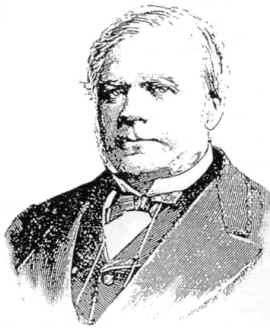
Fig. 3. René Dagron (1819-1900), a French photographer who used photomicrography to communicate with besieged Paris during the Franco-Prussian War using pigeon post”
III. During the unsuccessful military campaign of 1870, Napoleon III's troops suffered a defeat at Sedan. From September 2 to 4, Paris was surrounded by combined German-Prussian troops, and a five-month siege of the French capital began, where the 3rd Republic was proclaimed. All communications with the outside world were cut off. Desperate attempts were made to use a variety of means of communication, including «pigeon mail». But the carrying capacity of such an airmail carrier is not very large. This is where René Dagron's experience in microphotography came in handy.
On November 12, 1870, R. Dagron and several of his assistants, together with their equipment, embarked on two hydrogen-filled balloons, symbolically named “Niepce” and “Dagger” in honor of the inventors of photography. After a mad race over the heads of German lancers, who tried to land or shoot down the brave aeronauts, they finally managed to reach the city of Tours.
Upon arrival, R. Dagron set up his photo lab and organized microfilming of mail and other materials intended for transmission by “pigeon post”. It should be noted that at that time, breeding carrier pigeons was a very popular occupation in Europe. In December of the same year, R. Dagron improved the process and achieved an additional reduction in the size of the mail being sent. It is interesting that this process was considered a French military secret until 1890.
Letters and messages were made on transparent sheets divided into 12 sections measuring 80 x 110 mm. They were copied in parts by contact method on photographic plates, which after chemical processing were re-photographed at a large reduction using a special reproduction camera (Fig. 4) with 20 short-focus lenses. The result was microimages no larger than 1 mm in size! This is already quite similar to a real “microdot” (a study of Dagron’s “microdots” that have survived to this day has confirmed their very high resolution, even from the point of view of modern microfilming.). After processing, the emulsion with the microimages was removed from the glass plate in a bath of castor oil. In essence, this was a modification of the process used by the Americans long before. The Confederate archives contain a curious letter to Southern President D. Jefferson (not to be confused with US President Thomas Jefferson 1801-07) from a certain J. Winter of Alabama, dated July 1861. It contained a proposal to use microphotocopies of various reports to ensure their safety during delivery. Although there is no evidence that this proposal was implemented, there is evidence that the Confederates used hidden micro-images in some cases, including in containers designed to be swallowed in case of danger.
The resulting images were cut out and mounted along with other messages on a piece of colloidal film and prepared for sending by pigeon post to Paris.
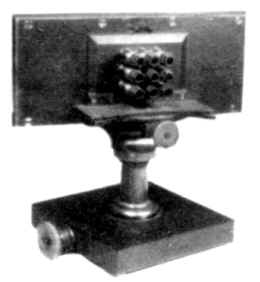
Fig. 4. René Dagron's camera for microphotography, model 1860. Bronze construction with 9 miniature objectives. It allowed obtaining up to 450 images measuring 2 x 2 mm on a glass plate 4.5 x 8.5 cm, covered with wet collodion. A similar camera was used to prepare pigeon mail» in 1870.
Despite some difficulties (the carefully adjusted equipment remained in Paris) related to imperfect optics and uneven shrinkage of the emulsion during drying, Dagron managed to copy 470 sheets containing 2.5 million messages onto microfilm during the 5-month siege of the French capital. It is claimed that one pigeon could carry from 36 to 54 thousand messages, filmed on 18 thinnest films.
In Paris, the resulting films were soaked in an ammonium solution, unwound, mounted on glass like modern slides, and projected using an arc lamp projector with 1,600x magnification. The messages were copied by a team of scribes and sent to addresses in besieged Paris. By the end of the siege, the number of copyists had grown from 4 to 67 people (Fig. 5), and light-sensitive paper began to be used for registration. Thus, the Franco-Prussian War involuntarily spurred progress in photography.
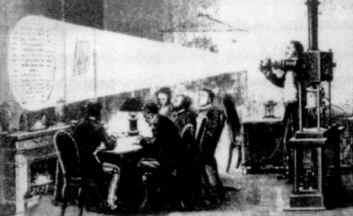
Fig. 5. An engraving from the Franco-Prussian War depicting “pigeon post” scribes.
To give an idea of the difficulties that photography and microphotography enthusiasts had to face in the middle of the last century, we will give a recipe for the so-called wet colloidal process (in 1871, the English doctor Maddox pointed out the possibility of replacing collodion with gelatin, in which layers of silver are suspended in the form of an emulsion, which we still use today) of Scott Archer, which was used, for example, by the recognized master John Denser.
1. Preparing the photographic plate. A thin layer of nitrocellulose solution in alcohol and ether (collodion) with the addition of potassium iodide is applied to a clean glass plate. The layer is dried until the required viscosity (stickiness) is achieved.
2. The layer is sensitized for 3-5 minutes in a light-proof container by soaking it in a solution of silver nitrate with the addition of potassium iodide.
3. Exposure. Photography is performed on a wet photographic plate. No more than 8-10 minutes should pass between the process of pouring nitrocellulose (collodion) and developing!
4. Development is carried out in a special developer containing pyrogallic acid under low light and stirring. The developer contains: iron sulfate, acetic acid, a piece of crushed sugar, methyl alcohol and water.
5. Fixation (fixing of the photographic image) is carried out in a 2.6 percent solution of potassium cyanide. Indeed, not only sappers make mistakes once.
IV. We cannot help but dwell on such a dramatic period of history as the Russo-Japanese War of 1904-05. Let us leave it to professional historians to determine whether the attack on Port Arthur on February 5, 1904 was a prototype of Pearl Harbor 37 years later.
In any case, the Russo-Japanese War became the testing ground where such new technical means as field howitzers, machine guns, barbed wire, anti-personnel mines, deep trenches and poison gases were tested for the first time. Photography, both general and special, was not left out either (in the late 60s of the 19th century, during the industrial boom, Japan became familiar with photographic technology. The first devices were British-made daguerreotype cameras).
According to eyewitnesses, photographic equipment was actively used by the Japanese military and, in particular, by intelligence. According to an anonymous author from the British Journal of Photography (Vol. 4, 1905, p. 257), the Japanese General Staff organized a special photographic service. Folding film cameras on lightweight bamboo tripods were used for filming, most of which were equipped with telephoto lenses (Fig. 6). The footage was immediately developed in the immediate rear, and then returned to the front. Reconnaissance photography was also carried out from balloons.
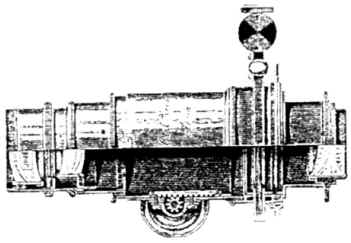
Fig. 6. Zeiss telephoto lens of the late 19th century.
Orders and reports were microfilmed. For security purposes, they were hidden under the fingernails or in the nostrils of couriers, and in some cases even in their stomachs in special miniature ivory containers. At the destination, the resulting microphotographs were enlarged in the same way as was done during the Franco-Prussian War.
V. By the beginning of the First World War, the photographic process had taken on the form we are accustomed to, however, the possibilities of microfilming were probably only used by the Germans. There is even a legend that the real task of Oskar Barnack (1879-1936) was to create, at the request of the German Foreign Ministry and the military, a small-format 35-mm film camera for microfilming documents. The idea of the camera was apparently based on the Swedish prototype of 1911 with a frame format of 31×49 mm and a film reserve of 30 m. In 1913, the first model “Ur-Leica” appeared (the prefix Ur corresponds to the German Urbild, meaning prototype. In 1913, two copies were made, which are stored in the museums of the Leitz company and the city of Munich. There were rumors about a third prototype) (Fig. 7). There is no evidence of this, but how can one explain that the first Leica became publicly available only at the Leipzig Fair in 1925? It became the forefather of one of the most famous families of cameras. All reputable intelligence agencies in the world used these reliable, compact cameras, even by modern standards, for microfilming documents.
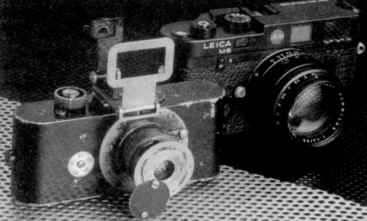
Fig. 7. “Ur-Leica” — the first model of the famous camera family next to its great-great-granddaughter.
VI. But the true spy exoticism is, of course, the microdot in its original form, created by the talented German scientist and engineer Emanuel Goldberg (Fig. 8). The son of a military surgeon who took part in the Russo-Japanese War, he was born in Moscow on September 1, 1881.

Fig. 8. The creator of the microdot, Emmanuel Goldberg (1881-1970)
After graduating from Moscow University, he went to Germany, where he worked in Leipzig with Nobel laureate W. Oswald. In 1906, E. Goldberg received the title of Doctor of Science for his study of the ionic nature of photographic processes. In 1910, he created a gray optical wedge for sensitometry — the Goldberg wedge.
On Oswald's recommendation, he was appointed professor at the Academy of Graphic Arts and Publishing in Leipzig. For two years, E. Goldberg worked in the laboratory of Adolf Mieth (Adolf Mieth (18662-1927) was a German astrophysicist, a leading specialist of that time in the field of high-resolution photographic materials) on problems of color photography, and was also a lecturer at the Military Academy in Berlin on a course in photogrammetry.
E. Goldberg played the flute and loved classical music, but unlike his colleagues he was not only a talented scientist, but also a practical engineer. In 1914, he participated in the creation of special observation devices (the creation of technical means for obtaining micro images went in parallel with the development of sights, observation and measuring devices, which widely used various micrometric grids and scales. In fact, similar problems were solved). In 1917, he developed an automatic camera for aerial photography from balloons, participated in the creation of the first German aerial cameras for airplanes of that time. Subsequently, he worked for the Carl Zeiss company in Dresden. But with the rise to power of Hitler and the beginning of Jewish pogroms, E. Goldberg also got it. Soon he managed to leave for France, and in 1937 he emigrated to Palestine, where he founded an optical company and was one of the first to deal with night vision devices.
Like Herschel and Brewster a century ago, E. Goldberg also thought about the role of microfilming for storing and processing the ever-increasing flow of printed information. In 1925, at the International Congress on Photography in Paris, Dr. E. Goldberg demonstrated the process he had created for producing “microdots” — microimages with the maximum possible geometric dimensions. By that time, he was the author of two monographs: “Fundamentals of Reproduction Technology” and “The Structure of the Photographic Image”
Here is what the inventor of the “microdot” reported at this congress in his three speeches:
Obtaining photographic images with a high degree of reduction has long attracted the attention of experimenters. The most important thing turned out to be obtaining photographic emulsions with sufficient light sensitivity and a virtual absence of graininess. As far as we know, no one has yet managed to solve both of these problems simultaneously. Based on my previous work, I (i.e., the author of the report, E. Goldberg) managed to develop a process for obtaining an image with unlimited fine graininess, the quality of which in practice is determined only by the perfection of the optical system used.
The following fundamental premise is used: do not use photographic development of the latent silver image. The fact is that in any process where chemical treatment of silver salts takes place (development or amplification), there is a noticeable increase in the graininess of the photographic layer, noticeable, of course, under a microscope.
At present, only two processes for obtaining photographic images are known: the first is the chemical development of a latent image; the second is the darkening of a light-sensitive layer directly illuminated by a light source.
Naturally, only the second method with direct “imprinting of the image” is suitable for obtaining high-resolution microimages. The very low light sensitivity of this process naturally excludes the possibility of its use in conventional cameras.
Fearing that the required exposure would be unacceptably long, I initially used the so-called solar microscope (direct light rays were used as a light source). The results exceeded all expectations: the required exposure was so short that it was necessary to introduce an “instant” shutter (like in a camera). The fact is that when obtaining micro images, the linear dimensions decrease, and therefore the concentration of light is proportional to the square of the linear decrease. Thus, when the linear dimensions of a bright object are reduced by 1000 times, the illumination of the image increases by 1 million times (this, of course, does not take into account the losses in the optical system). Ultimately, everything came down to using an ordinary 30-watt car lamp as a light source.
Below is a description of a setup that allows the production of a microimage of a printed page of text with 50 lines on a surface area of 0.01 sq. mm (Fig. 9). The size of the resulting symbols does not exceed 1 micron. The setup is based on an inverted high-quality photomicrographic system — a large Zeiss microscope mounted on an optical bench to protect against vibration. Since, as has already been said, the determining factor is the perfection of the optics used, a Zeiss apochromat for a microscope (F=4 mm) was used as an objective, corrected for work together with a cover glass. In general, the best results are obtained using a special objective used in metallography and an open emulsion layer without a cover glass.
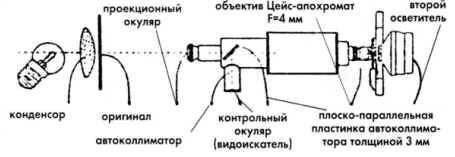
Fig. 9. Schematic diagram of E. Goldberg's setup for producing «microdots»
It should be especially noted that it is impossible to use homogeneous immersion objectives (immersed in liquid and forming a homogeneous optical system), since the proposed method of precise focusing is applicable only to photographic emulsions in contact with air.
Achieving precise focusing of the image was a difficult task. A special device had to be developed for this purpose. Rough focusing is achieved by bringing the microscope tube closer to the photographic plate with the light-sensitive layer to a distance of 0.5 mm, and fine focusing is achieved by careful adjustment with control using an autocollimator. At first, the image of the light spot decreases and concentrates, and suddenly becomes bifurcated and at the same time very sharp. Subsequently, focusing can be significantly simplified by making a special support ring, which is installed between the frame of the microscope lens and the light-sensitive plate. The exact height of the ring is adjusted using a fine abrasive.
Serious requirements are imposed on the lighting system and the original itself. Due to the inexorable laws of optics, obtaining high-quality microdots is possible only from contrasting line originals, specifically negatives with bright lines on a black background.
A low-voltage lamp with a power of 30 watts with a dense spiral filament was used as a light source, and the role of the condenser was performed by an aspherical Zeiss lens No. 1C with a diameter of 40 mm. The main thing is that the luminous spot completely filled the entrance pupil of the projection eyepiece.
To control the process of «imprinting» the image and to determine the required exposure, a second illuminator with a conventional condenser and an orange filter was installed behind the plate with the emulsion layer. In this case, during the work, the projection eyepiece was periodically covered by hand, and the image obtained on the photographic plate was viewed through the eyepiece of the autocollimator in the rays of the second illuminator. The orange light filter is necessary to prevent fogging of the photo emulsion.
A thin layer of colloidal emulsion of silver chloride, prepared from three reserve solutions, is used as a light-sensitive material. The solutions include: lithium chloride, silver nitrate and citric acid.
The exposure time during the experiments was about 10 seconds. As practice has shown, it largely depended on the quality of the chemicals used in the manufacture of the emulsion. Upon completion of the process, the photographic plate was treated with a tinting solution and fixed. For this, literally one drop of the solutions was enough. The resulting image can be cut out and applied to another carrier, as is done in the manufacture of scales and grids for various optical instruments.
If the original reduction degree is not so high and the “microdot” size is not less than 0.5 mm, the requirements for the quality of the equipment are significantly simplified. The microscope objective can be replaced with a short-focus photo objective (F=20 mm). The need for a projection eyepiece and autocollimator also disappears. Focusing can be performed using a powerful magnifying glass or a weak microscope.
So, if the relevant recommendations are followed, the process of making microimages turned out to be quite simple.
The main significance of E. Goldberg’s report was that he not only described in detail the practical method of obtaining micro images that he had developed, but also demonstrated a real microdot – “mikrat”, as he called it, with a significantly greater reduction of the original than had been possible to do before. In addition, at the sixth meeting, each participant in the congress was given a memorial copy of the microdot made by E. Goldberg (Fig. 10). It was a glass plate with a portrait of the inventor of photography, Nicéphore Niépce, framed in an elegant leather wallet. The size of the portrait itself did not exceed 0.03 mm! The portrait was edged with a circle divided into 360 sectors with gaps of 1 micron. Each sector contained a 2-micron number.
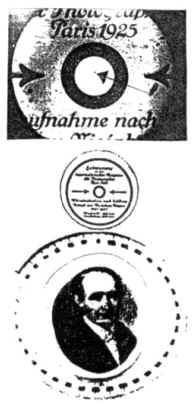
Fig. 10. A microdot sample presented by Goldberg to the congress participants. At the top is a part of the image at 12x magnification, in the middle is the image in real size, at the bottom is a microdot with a portrait of Nicéphore Niépce at 700x magnification.
Samples of E. Goldberg's microdots eventually ended up in the Institute of Optics of the French Photographic Society, the Kodak Museum, the Chicago Museum of Science and Technology, etc. However, they still cannot be found in many storage facilities!
You will learn about subsequent events related to such an exotic means of spy arsenal as a microdot, and even about the curiosities that accompanied them, in the next issue of our magazine.

Добавить комментарий